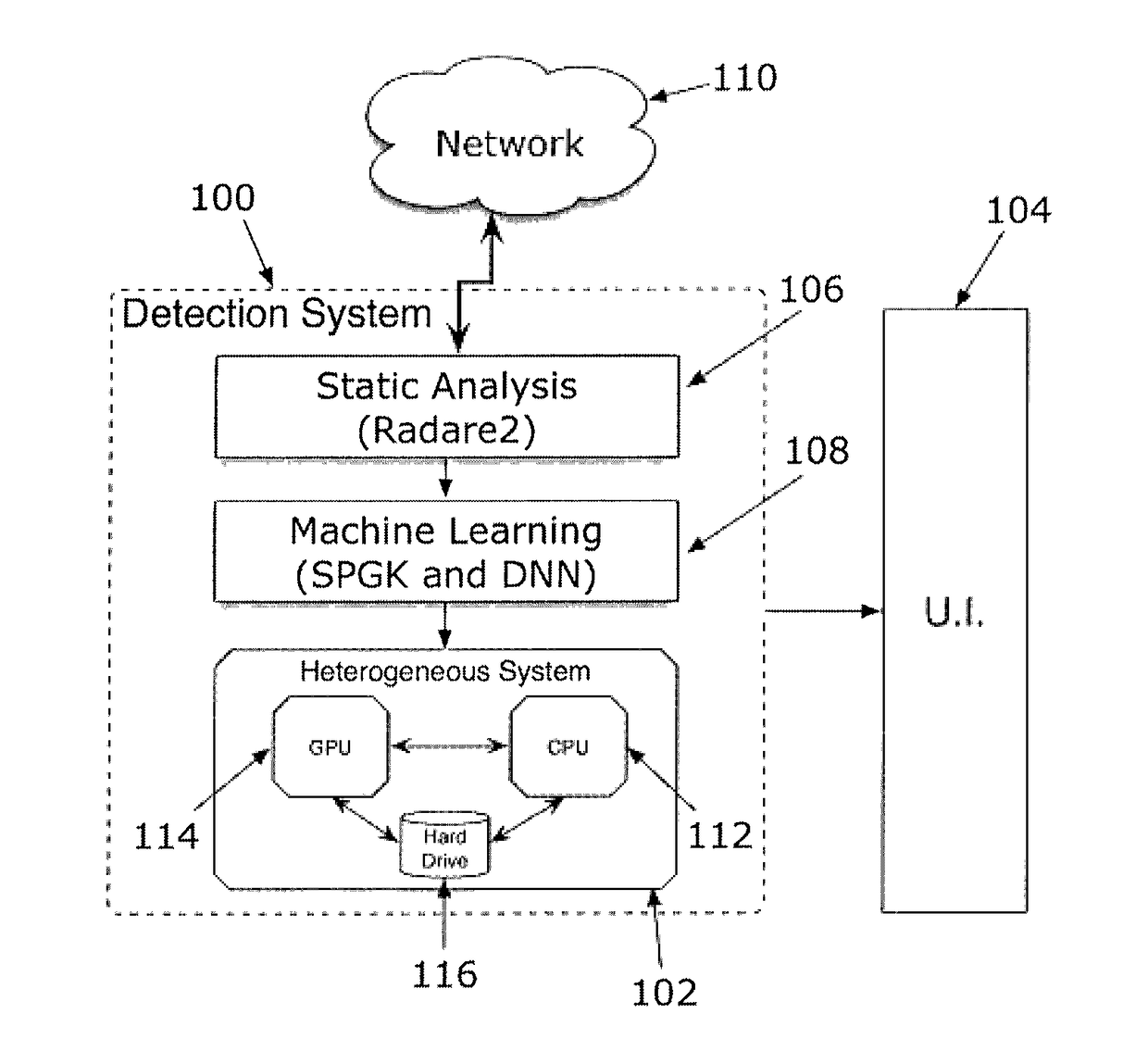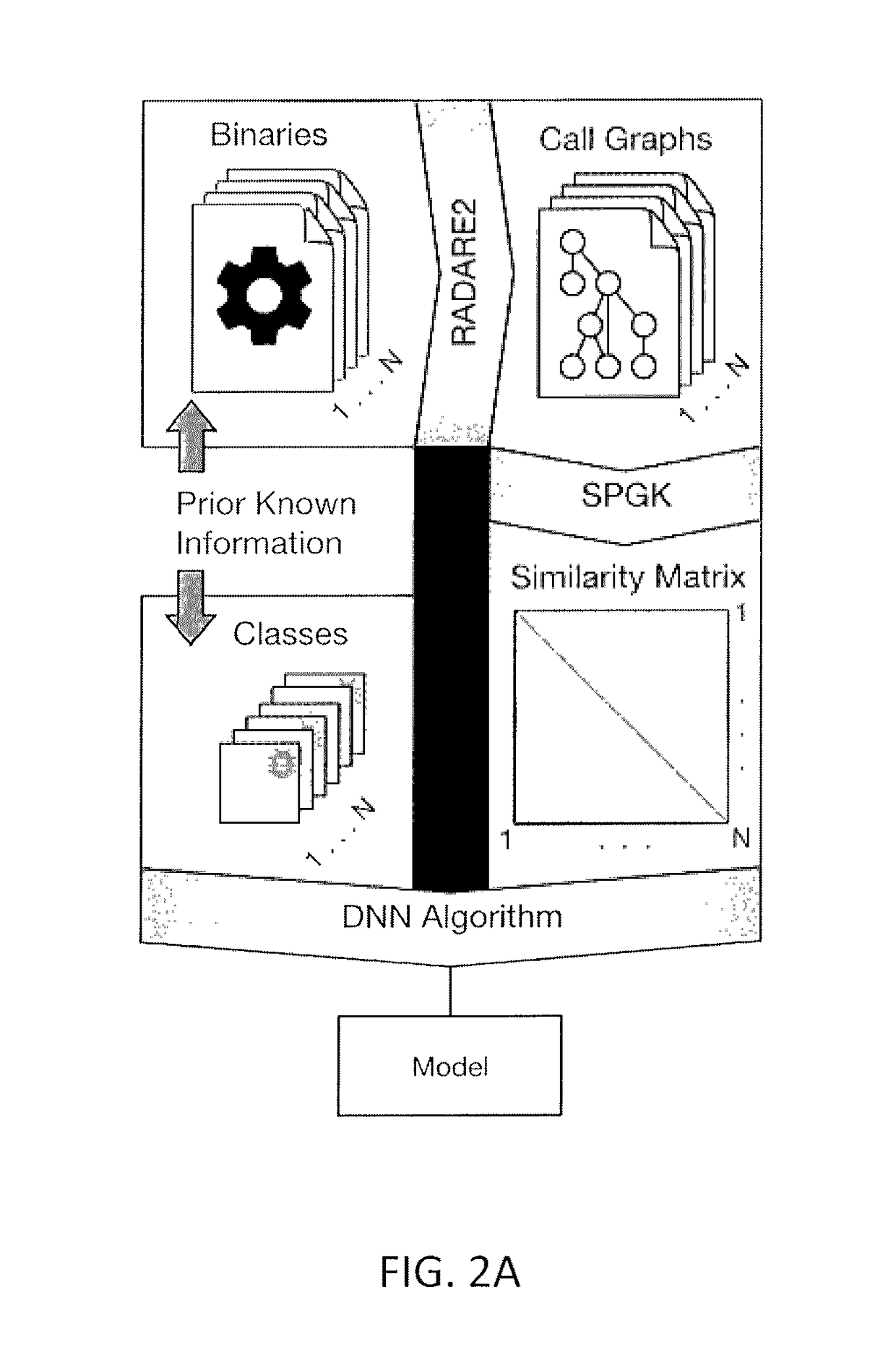Malware analysis and detection using graph-based characterization and machine learning
a graph-based characterization and machine learning technology, applied in the field of malware analysis and detection using graph-based characterization and machine learning, can solve the problems that the antiquated method of constructing malware detection systems cannot keep up with the massive amount of new malware variants created
- Summary
- Abstract
- Description
- Claims
- Application Information
AI Technical Summary
Benefits of technology
Problems solved by technology
Method used
Image
Examples
Embodiment Construction
[0016]A self-tuning and scalable malware analysis and detection method and system are described that adapt detection rules automatically to match the characteristics of the latest targeted attacks—thereby dramatically shortening the cycle from malware discovery to malware rules construction and deployment. In accordance with one aspect of the invention, graph-based compiler representations of binaries are used and the graphs are analyzed with machine learning algorithms (i.e., graph kernels) that take graphs as their input. These algorithms are effective at learning the subtle differences between goodware (non-malicious applications) and malware; however, they are computationally expensive. The algorithms may be optimized and run on an accelerator, e.g., a GPU, to reduce computational expense. As used herein the term / phrase GPU refers to conventional GPUs and other special purpose accelerators, e.g., Intel Xeon Phi's or FPGAs.
[0017]As an overview, graph-based representations (“call ...
PUM
 Login to View More
Login to View More Abstract
Description
Claims
Application Information
 Login to View More
Login to View More - R&D
- Intellectual Property
- Life Sciences
- Materials
- Tech Scout
- Unparalleled Data Quality
- Higher Quality Content
- 60% Fewer Hallucinations
Browse by: Latest US Patents, China's latest patents, Technical Efficacy Thesaurus, Application Domain, Technology Topic, Popular Technical Reports.
© 2025 PatSnap. All rights reserved.Legal|Privacy policy|Modern Slavery Act Transparency Statement|Sitemap|About US| Contact US: help@patsnap.com



